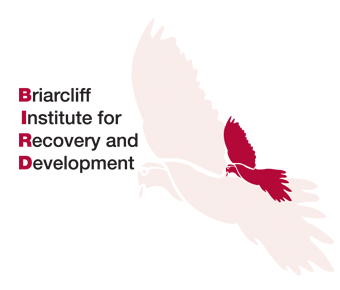The Briarcliff Institute for Recovery and Development is involved with a study of young people ages 16 to 25 who are Marijuana addicts (as indicated by chronic marijuana use for the past two years).
Here is a profile including the symptoms of the illness, possible causes, and treatment plans for TMS:
Symptoms of TMS:
1. Academic problems
2. Peer problems, co-ed relationship concerns, and inability to maintain romantic relationships for extended periods of time.
3. Anger, irritability, conflict with parents, short fuses, and hijacking quickly into emotional states with no Pre Frontal Lobe intervention available.
4. An extreme state of apathy, lethargy, and an inability to motivate.
5. Shifts in level of communication skills.
6. Pre-existing conditions that have escalated due to marijuana use such as anxiety, depression, and active ADHD.
7. Failure to launch, leave home, move into the world, stuck in time and recycling themes and issues.
8. Self-esteem issues that have become extremely toxic and are not responding to treatment interventions.
9. Any trauma experienced (like loss of a grandparent or auto accident) is not felt, processed, or supported by existing brain chemistry functions.
10. Sudden returning from college and dropping out and loss of focus on the future.
11. Lack of passion in almost all areas of life, including sexuality.
12. Not responding to any interventions of medications due to receptor site impact.
13. Frequent headaches and respiratory problems with no response to medical interventions.
We realize many young people struggle with these symptoms and that they are often a reflection of adolescent development, but most have not ingested the toxins these TMS youths have.
Causes of TMS:
1. Metal toxicity from using one-hitters, bongs and pipes made from glass, plastic and metals, thus inhaling fumes that are toxic along with THC. Toxicity enters but cannot be removed without proper methylation treatment.
2. Fumes become highly toxic if coper, lead, aluminum, titanium screening is used
3. Inhaling toxic residue from pesticides, fertilizers, and laced marijuana that remain in the fat soluble cells in the brain and body, causing shifts in brain chemistry due to the long acting presence of THC.
4. Ingestion thru inhalation of Butane from highly 80% potent Dabs that have become extremely popular.
5. Major psychological issues due to the unbalanced state of Methylation in the body and brain.
6. Possible Zinc deficiency.
7. Impact on brain and emotions, due to laced marijuana with K2, Spice or Sonic boom or any synthetic form of THC, which are easily available on the internet. Thus many unknown chemicals remain in the myelin sheath long after use stops.
8. Use of medical marijuana that has not been grown organically and may contain soil and environmental toxicity, along with illegal, high grade pesticides. This young person may be confident that the marijuana is pure, organic, and safe but is often wrong in their assumptions.
9. The rise of gangs tinkering with marijuana to compete with medical marijuana may contribute to ingestion of known and unknown substances (We have tested kids for THC and they were surprised to find ecstasy, opiates, meth, and PCP in their saliva).
10. Soil samples taken from both medical marijuana and street marijuana, like kush have shown high amounts of mold, fungi, higher levels of zinc not meant for human consumption. Some soils tested revealed toxic levels of copper in them. (Tests done by the Los Angeles city attorney found dangerously high levels of the pesticide Bifethrin. This is 1600 times higher than it should be and this was medical marijuana. Other studies found high levels of Diazinon, Pormethrin, and paclobutrazol)
11. Frequent relapse while in treatment and failure to recover after inpatient treatment centers, where brain chemistry is not dealt with.
Treatment options:
· Dr Wilson and the removal of metal, pesticide and butane toxins thru his program.
· Methylation products used under the supervision of Systemic Formulas, a Nutrient company.
· Nutrient interventions at Briarcliff Institute with supervision and training from Dr Wilson.
· Detoxification programs such as Hippocrates Institute.
The young people in our study are now in the process of testing to confirm toxicity and will be involved in restoration treatment.



